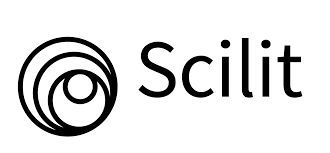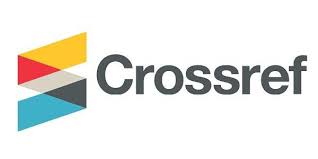PENGUKURAN DIMENSI KARIER PROTEAN DAN BOUNDARYLESS: KOMBINASI ATAU IMPLIKASI
DOI:
https://doi.org/10.25170/wpm.v15i1.4688Kata Kunci:
protean career, boundaryless career, contemporary environmentAbstrak
Contemporary career research is characterized by the concepts of boundaryless and protean careers. The concepts of boundaryless and protean careers are compared in this review. The boundaryless career concept is profiled according to Sullivan and Arthur's categories of physical and psychological limitations. The protean career concept is discussed based on the degree of self-directed and value-oriented career orientation exhibited by a career actor. The researcher combined the protean and boundaryless career descriptions to produce eight career profiles based on a combination of boundaryless and protean career orientations. These eight profiles were examined in terms of the challenges to career actors and individuals that assist them in individual career development.
Referensi
Arthur, M.B., Claman, P.H., & DeFillippi, R.J. (1995). Intelligent Enterprise, Intelligent Careers, Human Relations, 61, 163 – 186.
Briscoe, J.P., & Hall, D.T. (2006). The interplay of boundaryless and protean careers: combinations and implications. Journal of Vocational Behavior, 69 (1), 4 – 18.
Baruch, Y. (2014). The development and validation of a measure for protean career orientation. The International Journal of Human Resource Management, 25 (19), 2702 – 2723.
DeFillipi, R.J. & Arthur, M.B. (1994). The boundaryless career: a competency-based perspective. Journal of Organizational Behavior, 15: 4, 307–324.
De Vos, A., & Soens, N. (2008). Protean attitude and career success: The mediating role of self-management. Journal of Vocational Behavior, 73 (3), 449-456.
DiRenzo, M.S., & Greenhaus, J.H. (2011). Job search and voluntary in a boundaryless worl: A control theory perspective. Academy of Management Review, 36 (3), 567-589.
Greenhaus, J.H., Parasuraman, S., & Wromley, W.M. (1990). Effects of race on organizational experience, job performance evaluation, and career outcomes. Academy of Management Journal, 33
Greenberg, J., & Baron, R.A. (2000). Behavior in Organization: Understanding and managing the human side of work. Seventh edition. Prentice Hall International
Grant, A. (2007). Relationship job design and the motivaton to make a prosocial difference. Academy of Management Review, 32, p. 393-417.
Grant, A. (2008). The significance of task significance: Job Performance effect, relational mechanisms, and boundary conditiond. Journal of Applied Psychology, 93, 108 – 124.
Groysberg, B. & Lee, L. (2008). ‘The effect of colleague quality on to performance: the case of security analysts’. Journal of Organizational Behavior, 29 (8), 1123–1144.
Grimland, S., Vigoda-Gadot, E., & Baruch, Y. (2011). Career attitudes and success of managers: The impact of chance event, protean, and traditional careers. The InternationalJournal of Human Resource Management, 23 (6), 1074-1094.
Hall, D.T., & Lawler, E. (1970). Job characteristic and pressures and the organizational integration of professionals. Administrative Science Quarterley, 15, 271 – 282.
Iellatchitch, A., Mayrhofer, W. and Meyer, M. (2003). Career fields: a small step towards a grand career theory. The International Journal of Human Resource Management, 14: 5, 728–750.
Hall, D.T. (2004). The protean careers: A quarter-century journal. Journal of Vocational Behavior, 65 (1), 1-13.
Hall, D.T., & Chandler, D.E. (2005), Psychological Success: When the Career Is a Calling. Journal of Organizational Behavior, 26 (2), 155–176.
Hall, D.T., & Las Heras, M. (2010). Reintegrating job design and career theory: Creating not just good jobs but “smart” jobs. Journal of Organizational Behavior, 31 (2/3), 448-462.
Harris, C.M., Pattie, M.W., & McMahan, G.C. (2015). Advancement along a career path: The influence of human capital and performance. Human Resource Management Journal, 25 (1), 102 – 114.
Lips-Wiersma, M., & Hall, D.T. (2007). Organizational career development is not dead, a case study on managing the new career during organizational change. Journal of Organizational Behavior, 28, 771 – 792.
Leslie, L.M., Park, T., & Mehng, S.A. (2012). Flexible work practices: A source of career premiums or penalties? Academy of Management Journal, 55 (6), 1407-1428.
Maynard, D.C., Joseph, T.A., & Maynard, A.M. (2006). Underemployment, Job Attitudes, and Turnover Intentions. Journal of Organizational Behavior, 27, 509–536.
Ployhart, R.E. & Moliterno, T.P. (2011). Emergence of the human capital resource: a multilevel model. Academy of Management Review, 36: 1, 127–150.
Robbiins, S.P., & Coulter, M. (2016). Management. Thirteenth Edition. Pearson-England.
Seibert, S.E., Crant, J.M., & Krainer, M.L. (1999), Proactive Personality and Career Success. Journal of Applied Psychology, 84, 416–427.
Vinkenburg, C.J., & Weber, T. (2012), ‘Managerial Career Patterns: A Review of the Empirical Evidence. Journal of Vocational Behavior, 80, 592–607.
Wright, P.M. and McMahan, G.C. (2011). Exploring human capital: putting human back into strategic human resource management. Human Resource Management Journal. 21: 2, 93–104.



